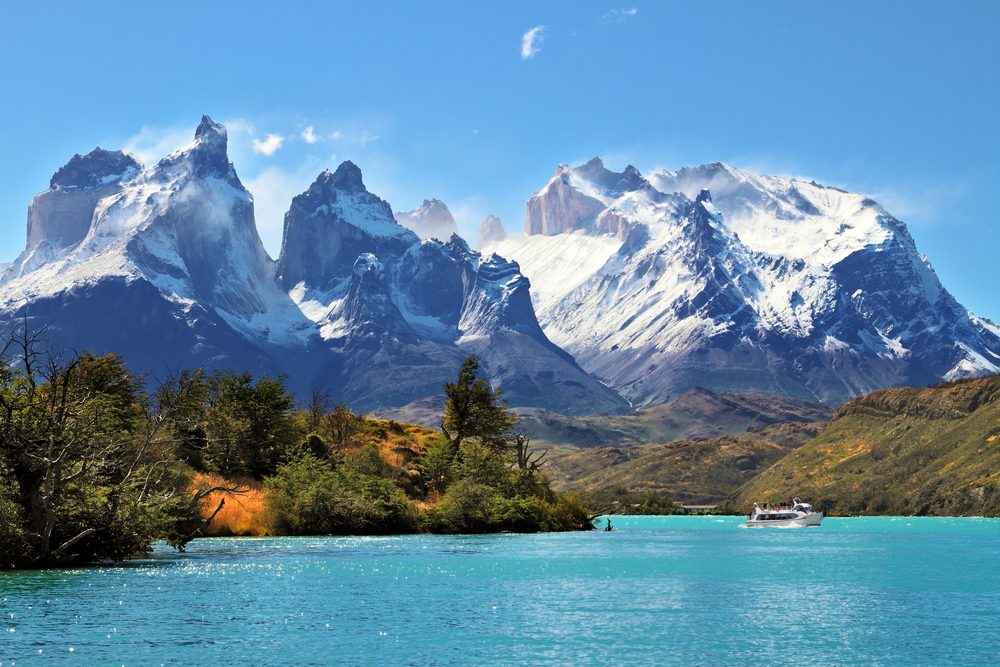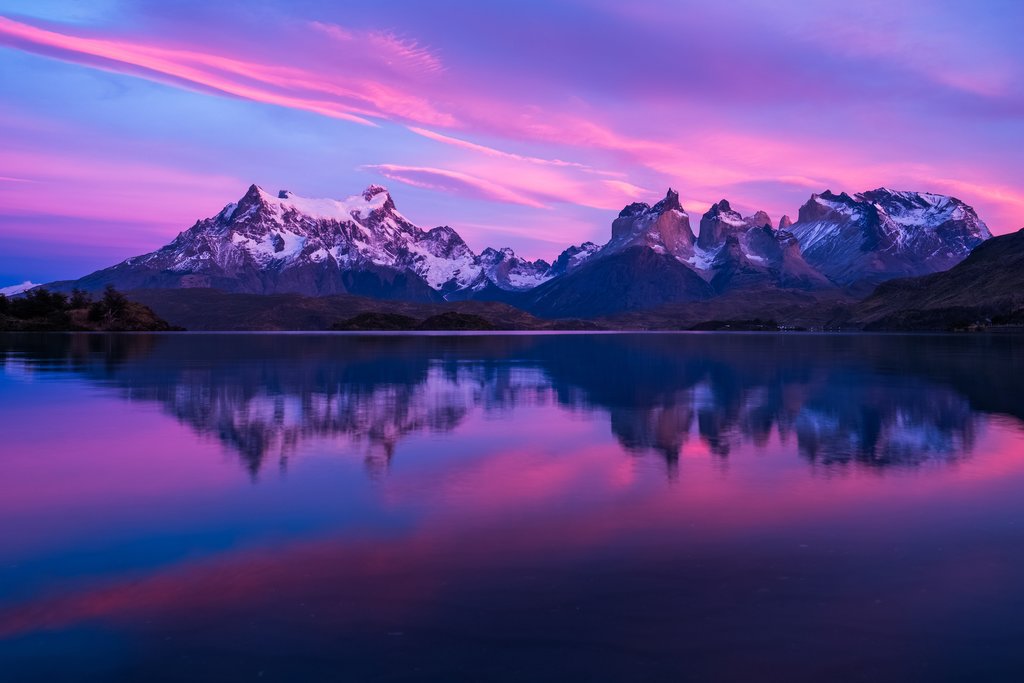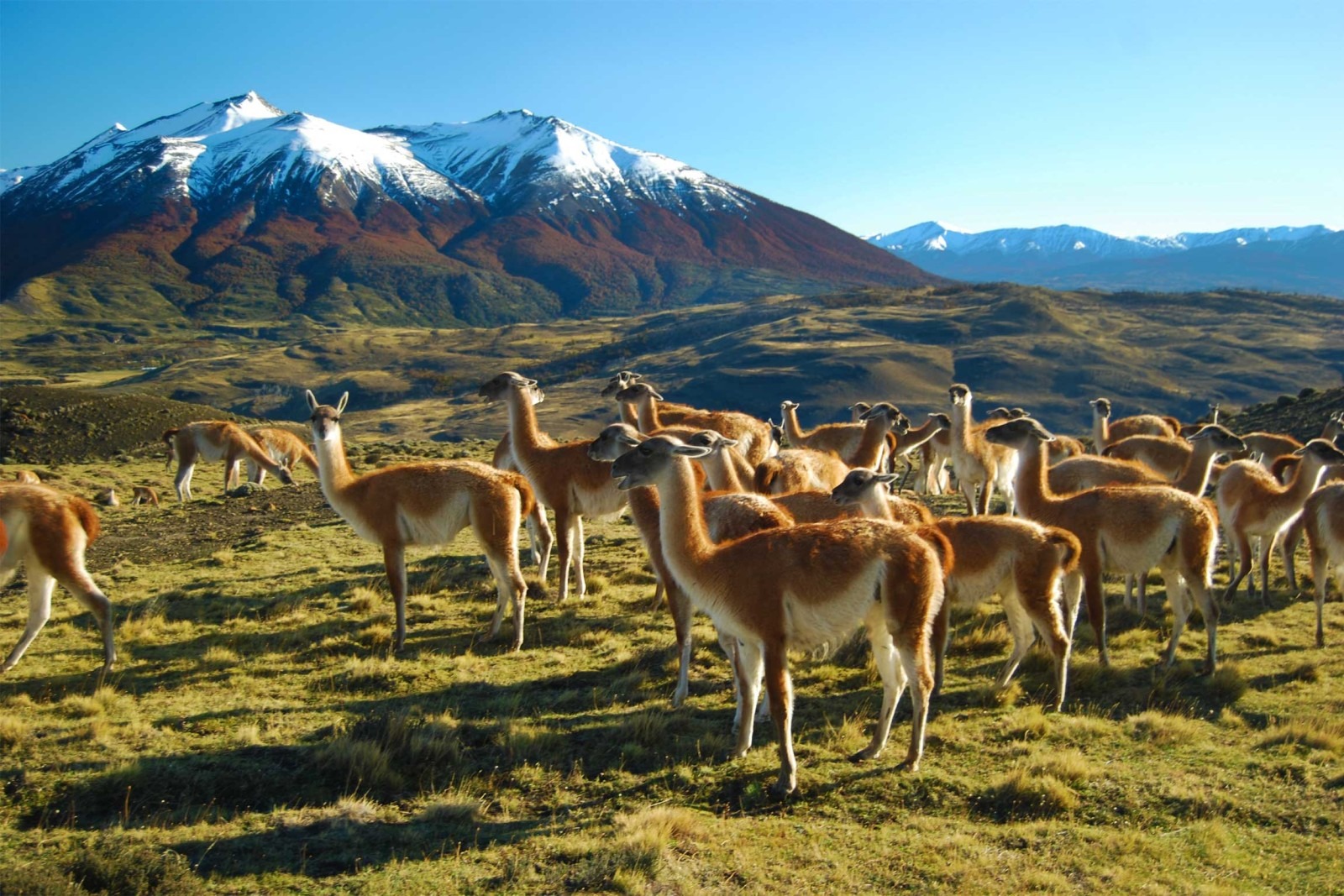As an avid nature enthusiast, I’ve had the privilege of visiting various spectacular destinations worldwide yet none have enthralled me similarly to the magnificent Torres del Paine National Park situated in the core of Chilean Patagonia. This staggering scenery, with its lofty granite pinnacles, shimmering glaciers and tranquil cerulean lakes, has been at the top of my wish list for rather some time, and I’m overjoyed to impart my experiences exploring this astonishing miracle of nature.
The towering peaks which seem to scrap the sky itself, the immense glaciers which have flowed for centuries, carving the land with their slow yet unstoppable march, and the mirrors of deep azure which reflect all they survey, forming a landscape both celestial and primeval. It is a realm where one can drop all worries and truly appreciate the grand scope of the natural world in all its untamed beauty.
Location and Geography
Torres del Paine National Park is one of the most iconic parks located in the southern part of Chile, near the Argentine border. The park is part of the Magallanes and Última Esperanza provinces and covers an area of approximately 227,298 hectares. Considered to be one of the most visually stunning parks in the world, the pride of Torres del Paine is the massif that named the park. The massif complex includes three granite peaks towering over 8,200 feet into the air, creating an astonishingly beautiful backdrop for the park’s various landscapes.
In general, the park is geographically diverse, boasting glaciers, rivers, lakes, and pampas – vast grasslands. The rough terrain is the result of extremely long geology. The result of about thirty million years of various geological activities, the park is a showcase of continuous Andes uplifts and the latest glacier activity.

Flora and Fauna
A puma, guanaco, the Patagonian fox, and the rhea are all possible sightings, as are various bird species: several types of geese and ducks, the great and snowy egrets and woodpeckers, the Patagonian mocking bird, thrushes, Austral blackbirds, the Magellanic woodpeckers, hawks, and the Andean condor.
Popular Hiking Trails
One of the major attractions of jp slot Torres del Paine National Park is the diverse variety of hiking routes available, offering visitors the opportunity to explore its ever-changing landscapes and witness its amazing natural sights firsthand. Perhaps the most renowned of these trails is the multi-day W Trek: it presents hikers with some of the park’s most prized panoramas, including the dramatic Base of the Torres, the picturesque French Valley, and the immense Grey Glacier.
The remainder of the park is full of well-known trails to choose from, such as the strenuous yet rewarding Paine Circuit, a longer loop encircling the massive Paine massif, as well as the Laguna Azul trail, providing hikers with breathtaking views of the park’s namesake vivid blue lagoon. No matter the path selected, hikers are certain to experience the magnificent scenery, wide array of wildlife, and develop a special bond with the rugged yet pristine natural beauty that defines this national park.
Camping and Accommodation Options in Torres del Paine National Park
While visiting Torres del Paine National Park, travelers have many options at their disposal for staying overnight, ranging from basic camps to high-end lodges and hotels. When it comes to more adventurous people, camping is often considered the toption, and indeed, Torres del Paine has an ample amount of campsites placed all over the park where one can find simple accommodation and an incomparable view of the beautiful panorama.
However, not every guest is to the taste of this type of staying, and that is why the park has numerous lodges and hotels, the majority of which are situated in the central village of Puerto Natales. The accommodations provide everything from simple cabins to luxurious suites, as long as an unprecedented guided tour around the park, meals, and other services making the travel an experience to remember.
Must-Visit Landmarks in Torres del Paine National Park
In the Torres del Paine National Park, one can explore a wide variety of natural landmarks and attractions that ensure visitors are entertained. The three towering granite rocks, Torres del Paine massif, are the park’s main attraction, often called the torres. Hikers may face difficulty arriving at the torres del paine towers’ base, but everyone is treated to views of the park’s tough landscape. The Grey glacier is another outstanding ice formation and, similarly as other glaciers, changes every year by calving large pieces of ice that float on the Grey lake.
Visitors can take a boat to the glacier or hike around it via the lake to examine the glacier from various perspectives. Finally, they can also visit the park’s lakes, Lago Pehoe and Lago Nordenskjold, that allow one to encounter the calm of water while the surrounding mountains may be captured on a single frame.
Safety Tips for Visiting Torres del Paine National Park
One should not be fooled by the beauty of Torres del Paine National Park. Being a harsh and challenging natural environment, travelers are exposed to immense dangers of its harsh climate, strong winds, rapidly changing weather, and other unpredictable conditions.
To ensure one’s safety and comfort, people should be equipped with warm, weatherproof clothes, furred gloves, reliable boots for hiking, and necessary tracking equipment. Additionally, people should also check on the rout and forecast conditions in the park, as well as notify someone about the proposed timing to get back. People should also be cautious about the park’s animals, and especially about pumas hunting in the area. In this way, equipped and prepared travelers can enjoy the park’s wonders and feel safe simultaneously.

Best Time to Visit Torres del Paine National Park
The best time to visit Torres del Paine National Park can vary depending on individual preferences and the desired experience. The park’s high season typically runs from November to April, when the weather is generally milder and the days are longer, allowing for more time to explore the park’s trails and attractions.
During the summer months (December to February), visitors can expect to enjoy warm temperatures, clear skies, and the opportunity to witness the park’s diverse flora and fauna in full bloom. However, this is also the busiest time of year, with larger crowds and higher prices for accommodations and services.
For those seeking a more solitary and serene experience, the shoulder seasons of spring (September to November) and fall (March to May) can be an excellent choice. These times of year offer fewer crowds, lower prices, and the chance to witness the park’s stunning seasonal changes, such as the vibrant fall foliage or the first snowfall of the year.
Ultimately, the best time to visit Torres del Paine National Park will depend on individual preferences and the type of experience you’re seeking. Regardless of when you choose to visit, the park’s natural beauty and breathtaking landscapes are sure to leave a lasting impression.

How to Get to Torres del Paine National Park
Reaching Torres del Paine National Park can be a bit of a journey, but the effort is well worth it for those seeking to experience the park’s stunning natural beauty. The most common entry point is the town of Puerto Natales, located approximately 3 hours by bus or car from the park’s main entrance.
Visitors can reach Puerto Natales by flying into the Punta Arenas Airport, which is the closest international airport to the park, or by taking a bus or shuttle from other nearby cities, such as El Calafate in Argentina. Once in Puerto Natales, travelers can arrange for transportation to the park, either by renting a car, booking a private transfer, or taking a public bus.
Alternatively, some visitors choose to start their journey in El Calafate, Argentina, and then cross the border into Chile to access the park. This route can be a bit more complicated, but it offers the opportunity to explore the stunning landscapes of both countries during a single trip.
Regardless of the route taken, the journey to Torres del Paine National Park is an adventure in itself, with breathtaking scenery and the opportunity to immerse oneself in the rich culture and history of the Patagonian region.
Conclusion: Experiencing the Wonders
As I reflect on my time exploring the majestic Torres del Paine National Park, I am left in awe of the park’s natural beauty and the profound impact it has had on me. From the towering granite peaks that pierce the sky to the serene turquoise lakes that mirror the surrounding landscapes, every moment spent in this park has been a testament to the power and wonder of the natural world. If you enjoyed reading about Torres del Paine National Park, please consider reading our article about Brain Health to explore another fascinating aspect of well-being and discovery.



